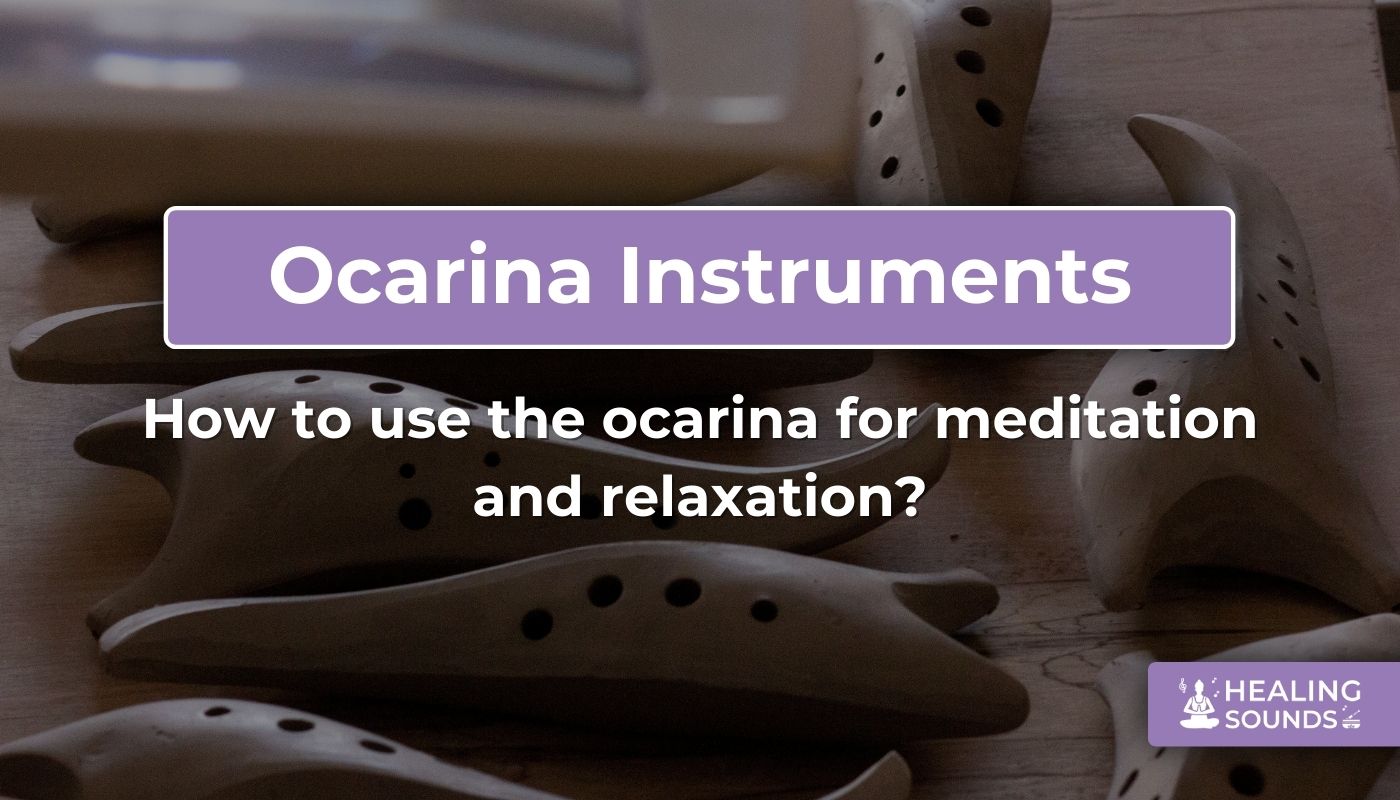In recent years, the ancient art of ocarina meditation has captured the imagination of mindfulness enthusiasts worldwide. The soothing, ethereal sounds produced by this unique wind instrument are increasingly recognized as powerful relaxation techniques, promoting deep states of calm and inner peace. Combining the tactile engagement of playing music with the profound effects of sound therapy, ocarina meditation offers a unique pathway to stress relief. Whether you are deeply versed in meditation or just beginning your journey, exploring how the ocarina can enhance your practice might just transform your wellness routine. This guide delves into using the ocarina as a meditative tool, offering practical techniques and insights into its benefits for mental and emotional well-being.
What is Ocarina Meditation? Unveiling the Practice
Ocarina meditation is a mindful practice that uses the simple, yet profound, act of playing the ocarina to anchor awareness and foster relaxation. Unlike some traditional meditation forms that solely emphasize stillness or breath, this method engages multiple senses – the feeling of the instrument, the control of breath, and the listening to the sounds produced. It’s a form of active sound therapy where you are both the creator and receiver of healing vibrations.
For mindfulness enthusiasts, the ocarina offers a tangible focus point. The gentle airflow required encourages conscious breathing, while the pure tones help quiet mental chatter. It bridges the gap between passive listening (like guided meditations) and active engagement, making mindfulness feel more accessible and musically expressive. It’s about creating a personal soundscape for inner peace.
The Science of Sound: How Ocarina Music Promotes Relaxation
The therapeutic effects of music and sound are well-documented. Specific sound frequencies, like the clear, often lower-mid range tones produced by many ocarinas, can positively influence brainwave activity, encouraging shifts from the alert beta state towards the more relaxed alpha and even theta states associated with deep meditation and calm.
This process links directly to the body's relaxation response – the physiological opposite of the stress response. Engaging in ocarina relaxation can help lower heart rate, reduce blood pressure, and decrease stress hormones like cortisol. The vibrations produced when playing can also have a subtle grounding effect. As supported by research bodies like the American Music Therapy Association (AMTA), using musical instruments actively engages the brain, promoting focus and reducing anxiety.
Getting Started with Ocarina Meditation: Your First Steps
Beginning your ocarina meditation journey is simple and requires no prior musical experience. The focus is on presence and breath, not performance. Here’s how to start:
Choosing Your Ocarina
Selecting an ocarina that feels right is important. For beginners, a 12-hole model is often recommended as it offers a good balance of simplicity and tonal range. Consider materials like ceramic for warm tones or durable options if you plan to travel with it.

12 Hole Soprano Ceramic Ocarina, Treble Wind Instrument
€24.90 €47.90
A high-quality ceramic ocarina offering vibrant, clear tones, ideal for beginners starting their ocarina meditation journey.
Explore This OcarinaSetting the Scene for Relaxation
Find a quiet, comfortable space where you won't be disturbed. This could be a dedicated meditation corner, a peaceful spot outdoors, or simply a time when your home is quiet. Dim lighting or natural light can enhance the atmosphere. Sit comfortably, either on a cushion or chair, ensuring your posture supports easy breathing.
Basic Breathing and Playing Techniques
Before playing, take a few moments to focus on your breath. Inhale deeply and exhale slowly. Hold the ocarina gently. You don’t need to play complex songs. Start by producing a single, steady tone. Focus on breathing smoothly into the instrument, listening intently to the sound you create. Let the vibration and sound fill your awareness. Explore different notes slowly, noticing how each feels and sounds.
- Focus on long, gentle breaths to create smooth tones.
- Don't worry about playing "correctly" – focus on the feeling and sound.
- Experiment with covering different holes slowly to hear the pitch change.
- Keep sessions short initially (5-10 minutes) to build comfort.
Deepening Your Practice: Techniques for Enhanced Relaxation
Once you are comfortable with the basics, you can explore techniques to deepen your ocarina meditation experience. These methods enhance the connection between breath, sound, and body awareness.
Breath-Synchronized Playing
Try coordinating your playing directly with your breath cycles. Inhale deeply, then exhale slowly while playing a single long tone or a short sequence of notes. Match the length of the note to the length of your exhalation. This technique powerfully anchors your attention to the present moment and enhances respiratory awareness, a key benefit explored in ocarina breath control techniques.
Intuitive Melodies
Let go of specific notes or scales. Simply allow your fingers to move intuitively over the holes as you breathe into the ocarina. Focus on the emerging melody without judgment. This encourages creative expression and helps release mental tension, transforming the practice into a form of personal sound therapy.
Exploring Different Ocarinas
Different ocarinas offer varied tonal qualities and complexities, which can enrich your meditation. Alto or tenor ocarinas often produce deeper, more resonant tones ideal for grounding, while multi-chamber ocarinas allow for harmonies and layered sounds for a more immersive experience.
Explore Ocarinas for Deeper Meditation

12 Hole Alto C Ocarina, Blue & White Porcelain Flute
€29.90
€49.90
Beautiful porcelain ocarina with soothing Alto C tuning, perfect for creating calming melodies during ocarina relaxation sessions. Learn more ➔

Triple Chamber Alto C Ceramic Ocarina Wind Instrument
€99.90
€139.90
Experience richer harmonies and deeper immersion with this triple chamber ocarina, ideal for advanced meditation using wind instruments. Learn more ➔
Integrating Ocarina Relaxation into Your Daily Life
Consistency is key to experiencing the full benefits of ocarina meditation. Integrating it into your daily routine doesn't need to be time-consuming. Even short, focused sessions can make a difference.
- Schedule It: Dedicate 5-15 minutes at the same time each day, perhaps in the morning to set a calm tone or evening to unwind.
- Combine Rituals: Pair your ocarina practice with an existing habit, like after your morning tea or before journaling.
- Stress Relief Breaks: Use a 2-3 minute session during a stressful workday for a quick mental reset.
- Mindful Moments: Simply hold the ocarina and focus on your breath for a minute, even without playing, to reconnect.
By making ocarina relaxation a regular part of your life, you cultivate a readily accessible tool for managing stress, enhancing focus, and fostering a deeper sense of inner peace.
Conclusion
Ocarina meditation offers a unique and enriching approach to mindfulness and relaxation. By blending the simplicity of breathwork with the expressive beauty of sound, it provides an accessible yet profound tool for anyone seeking calm and stress relief. These relaxation techniques leverage the power of sound therapy in a personal and engaging way.
Through consistent practice, mindful exploration, and choosing an instrument that resonates with you, the ocarina can become a cherished companion on your wellness journey. You'll not only develop a new skill but also cultivate a deeper connection with yourself through the healing power of sound. Embrace the soothing tones and discover the inner peace waiting to be unlocked.
Ready to begin your journey? Explore the curated collection of high-quality ocarinas at Healing Sounds, specifically chosen to support meditative practices and enhance your well-being.
Frequently Asked Questions about Ocarina Meditation & Relaxation
Meditation and relaxation techniques are practices designed to calm the mind, reduce stress, and promote a state of peace. They can include mindfulness, breathwork, guided imagery, progressive muscle relaxation, and practices involving sound or music, like ocarina meditation. The goal is often to increase awareness, manage emotions, and improve overall well-being.
Deep relaxation meditation often involves finding a quiet space, assuming a comfortable position, and focusing on the breath. Techniques like body scans (bringing awareness to different parts of the body) or using calming sounds can help deepen the state. With ocarina meditation, focusing intently on the sound and vibration while maintaining slow, controlled breathing naturally guides you towards deeper relaxation.
Sound therapy uses specific frequencies and vibrations to interact with the body's energy field and nervous system. Calming sounds, like those produced by an ocarina, can help slow brainwave activity, trigger the relaxation response (reducing heart rate and stress hormones), and promote emotional balance. The focused listening involved also acts as a form of mindfulness, quieting mental chatter.
Using instruments like the ocarina in meditation offers several benefits: it provides a tangible focus point for attention, encourages mindful breathing, engages multiple senses for deeper immersion, allows for emotional expression through sound, and can make the practice feel more active and engaging compared to purely silent meditation. It blends the benefits of mindfulness with the therapeutic qualities of music creation.
Start small with short, consistent sessions (5-10 minutes). Schedule it at a specific time each day, perhaps morning or evening. Pair it with an existing habit, like having tea or before sleep. Keep your instrument accessible. Use it for quick stress-relief breaks during the day. Focus on consistency over duration to build it into a sustainable habit.

